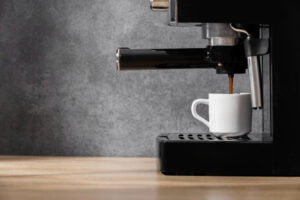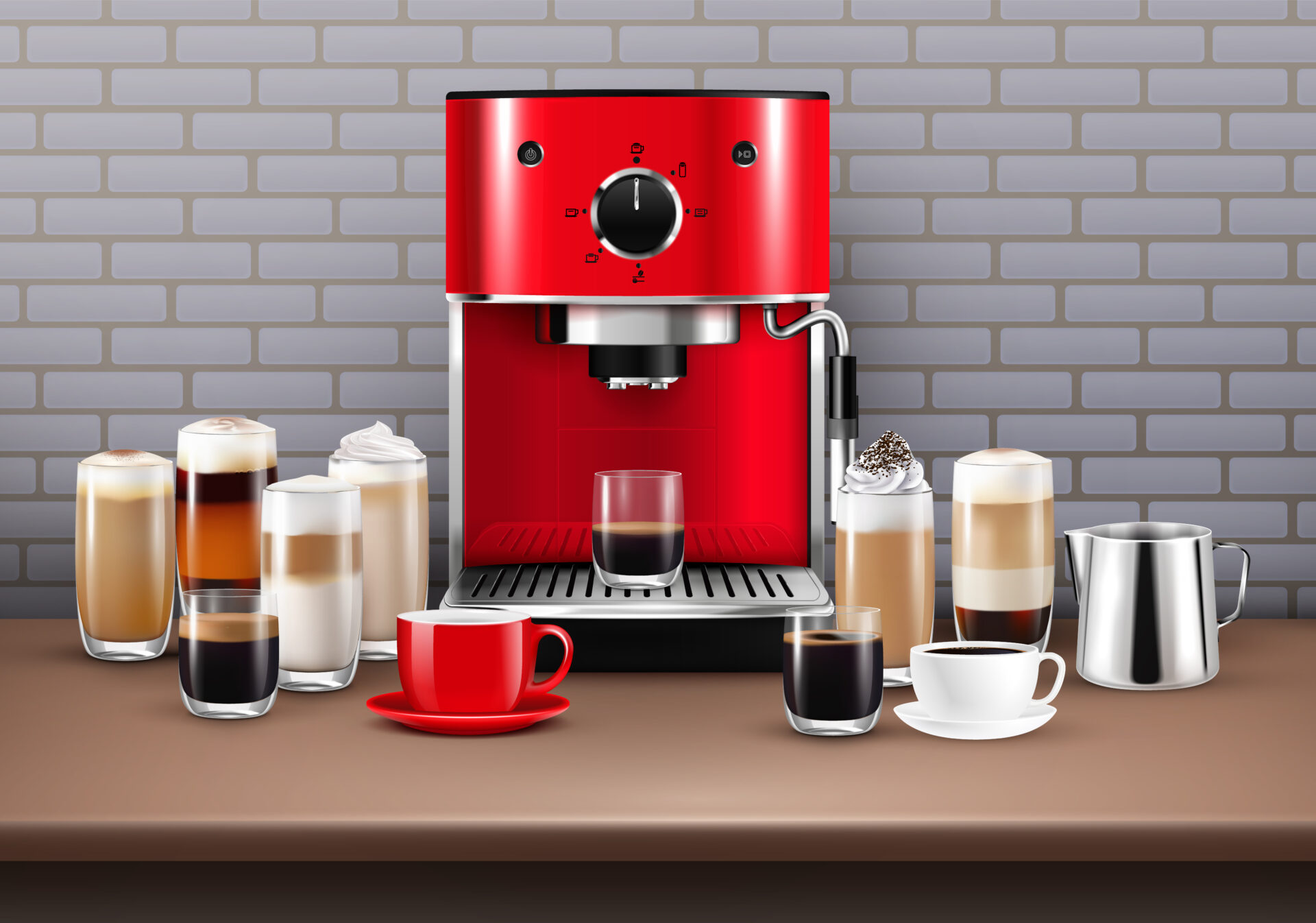A coffee machine, also known as a coffee maker or coffee brewer, is a specialized appliance designed to prepare and brew coffee. It automates the process of extracting flavors from coffee grounds, allowing users to enjoy a fresh and flavorful cup of coffee with ease. Coffee machines come in various types, each catering to different preferences and brewing methods.
What are the Different Types of Espresso Machines?
When it comes to espresso, aficionados know that the machine used can significantly impact the taste and aroma of the final product. There are three primary types of espresso machines: manual, semi-automatic, and automatic.
- Manual Espresso Machines:
Picture yourself as a barista, controlling every aspect of the brewing process. That’s the beauty of manual espresso machines. These require a hands-on approach, allowing you to adjust the grind size, tamping pressure, and extraction time. It’s a true art form that results in a deeply personalized cup of espresso.
- Semi-Automatic Espresso Machines:
For those who seek a balance between control and convenience, semi-automatic machines are the perfect choice. They offer manual control over some aspects of the brewing process while automating others. With a semi-automatic espresso machine, you can fine-tune your coffee to perfection without the steep learning curve of a manual machine.
- Automatic Espresso Machines:
Imagine waking up to the rich aroma of freshly brewed espresso without lifting a finger. Automatic espresso machines make this dream a reality. These machines handle everything from grinding the beans to extracting the perfect shot with just a press of a button. Ideal for busy mornings when time is of the essence.

How Does a Drip Coffee Maker Work?
Drip coffee makers, also known as filter coffee machines, are a staple in households and offices around the world. But have you ever wondered about the magic happening inside that sleek device on your kitchen counter?
Drip coffee makers operate on a simple yet effective principle. Here’s a step-by-step breakdown:
- Water Reservoir:
The process begins with water. You fill the machine’s water reservoir, and as it heats up, the water moves through a tube and into a drip area.
- Heating Element:
Behind the scenes, a heating element brings the water to the optimal brewing temperature. This is typically around 200°F (93.3°C) for extracting the best flavors from your coffee grounds.
- Drip Area:
Once the water is hot, it drips onto a perforated basket containing coffee grounds. The hot water extracts the flavors from the grounds as it passes through, creating the coffee concentrate.
- Carafe or Coffee Pot:
The resulting liquid, now transformed into delicious coffee, drips down into a carafe or coffee pot placed below the drip area. This pot keeps your coffee warm and ready to be enjoyed cup by cup.
How Do You Make Coffee and Coffee Machine?
Now that we’ve covered the basics of coffee machines, let’s delve into the art of making coffee. Whether you’re a barista-in-training or a casual coffee enthusiast, mastering the fundamentals is key to crafting a perfect cup.
- Selecting the Right Coffee Beans:
The journey to a great cup of coffee starts with high-quality beans. Experiment with different varieties and find the one that suits your taste buds. Consider factors like roast level, origin, and flavor notes to discover your preferred blend.
- Grinding the Beans:
Freshly ground beans unlock the true essence of coffee. Invest in a good grinder and adjust the grind size based on your brewing method. For example, a coarser grind is suitable for a French press, while an espresso machine requires a finer grind.
- Measuring the Coffee:
Precision matters when it comes to coffee brewing. Use the right coffee-to-water ratio for your chosen method. A standard guideline is 1 to 2 tablespoons of coffee per 6 ounces of water, but feel free to adjust based on your taste preferences.
- Water Quality:
The quality of water can significantly impact the taste of your coffee. Use filtered or bottled water to ensure a clean and pure flavor profile.
How Does a Coffee Machine Pump Work?
The heart of many espresso machines, the pump is a crucial component that pressurizes water to extract the flavors from coffee grounds. Understanding how a coffee machine pump works sheds light on the precision behind a great cup of espresso.
- Water Intake:
The pump begins its journey by drawing water from the machine’s reservoir. This water is then pushed through a one-way valve, preventing any backflow.
- Pressurization:
Once the water is inside the pump, it encounters a piston or a diaphragm that creates pressure. This pressure is vital for the espresso extraction process, as it forces hot water through the compacted coffee grounds, extracting the rich flavors and aromas.
- Espresso Extraction:
The pressurized water is directed through the coffee grounds in the portafilter, resulting in a concentrated shot of espresso. The pressure ensures that the extraction is swift and thorough, capturing the essence of the coffee beans.
- Pressure Release:
After the extraction, the pump releases the pressure, allowing the used coffee grounds to be easily removed from the portafilter, preparing the machine for the next brewing cycle.
How Does a Coffee Filter Machine Work?
Coffee filter machines, commonly found in homes and offices, simplify the brewing process while delivering a consistently flavorful cup. Let’s uncover the mechanics behind these convenient devices.
- Water Reservoir and Heating Element:
Similar to drip coffee makers, filter machines have a water reservoir and a heating element. The water is heated to the optimal brewing temperature, usually between 195°F and 205°F (90.6°C to 96.1°C).
- Drip Mechanism:
The machine then uses gravity to drip the hot water over a basket containing coffee grounds. This allows the water to extract the flavors and oils from the grounds as it passes through.
- Paper or Mesh Filter:
Coffee filter machines use either paper or mesh filters to separate the brewed coffee from the grounds. Paper filters absorb oils, resulting in a cleaner cup, while mesh filters allow more oils to pass through, offering a richer flavor profile.
- Carafe or Coffee Pot:
As the brewed coffee drips through the filter, it collects in a carafe or coffee pot beneath the machine. The warming plate beneath the pot keeps the coffee at a desirable temperature until you’re ready to savor it.
The machine is not just a tool but a gateway to an exceptional experience. Understanding the intricacies of different types of espresso machines, drip coffee makers, and coffee filter machines empowers you to elevate your coffee game. Armed with this knowledge, you can embark on a journey of flavor exploration, crafting the perfect cup to suit your preferences. So, go ahead, experiment with your favorite beans, adjust the grind size, and let the aroma of freshly brewed coffee fill your senses. Happy brewing!
